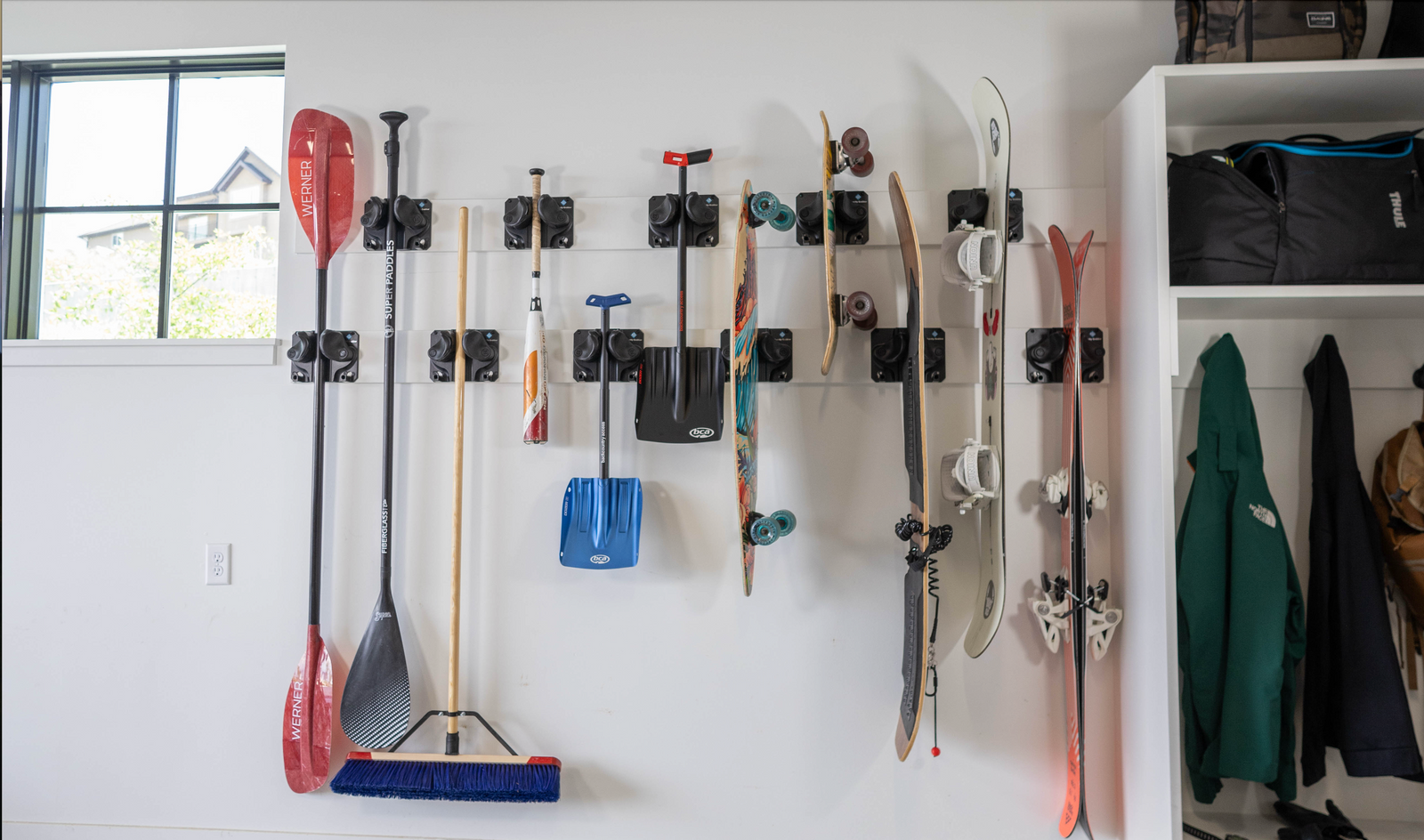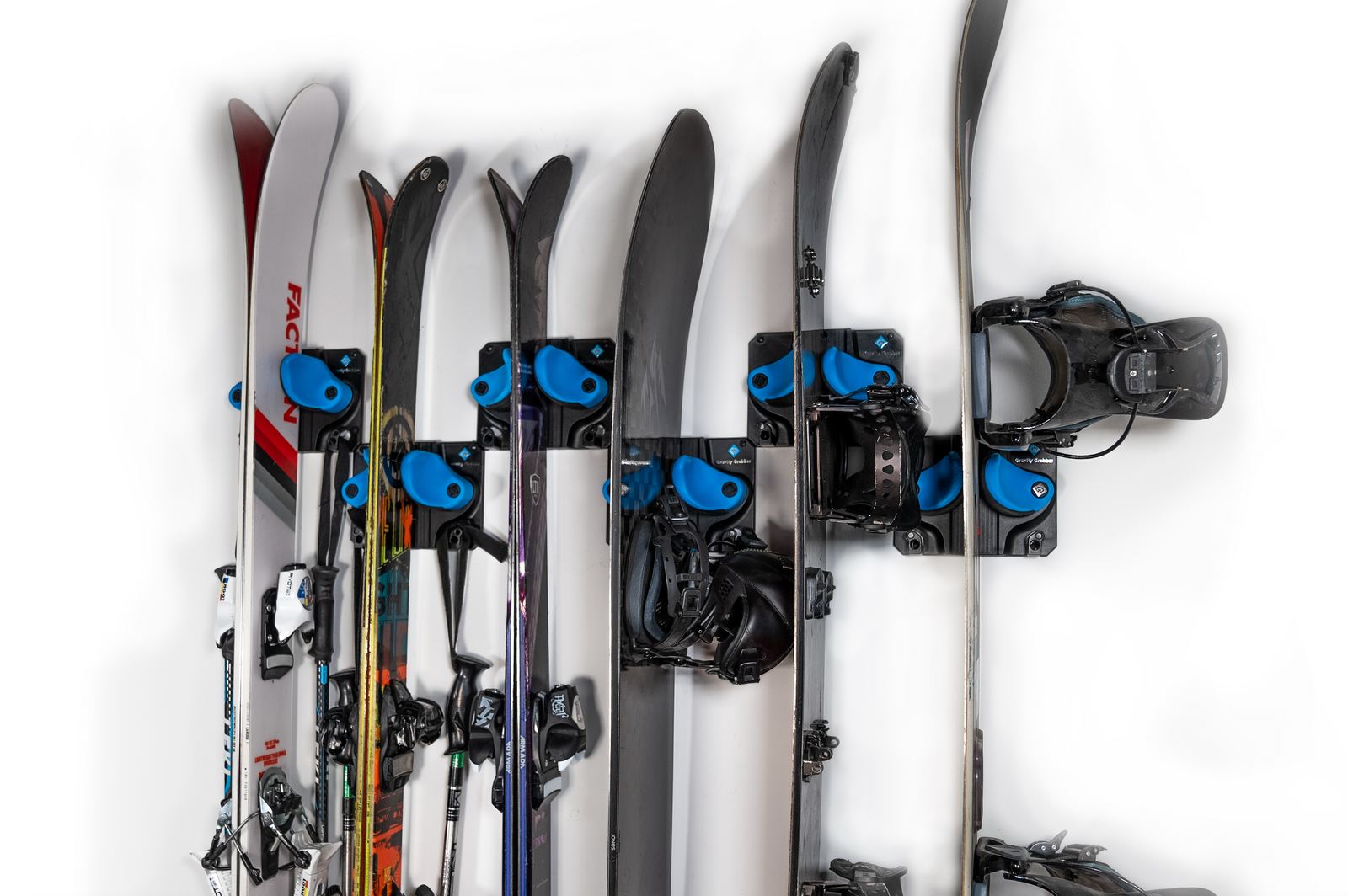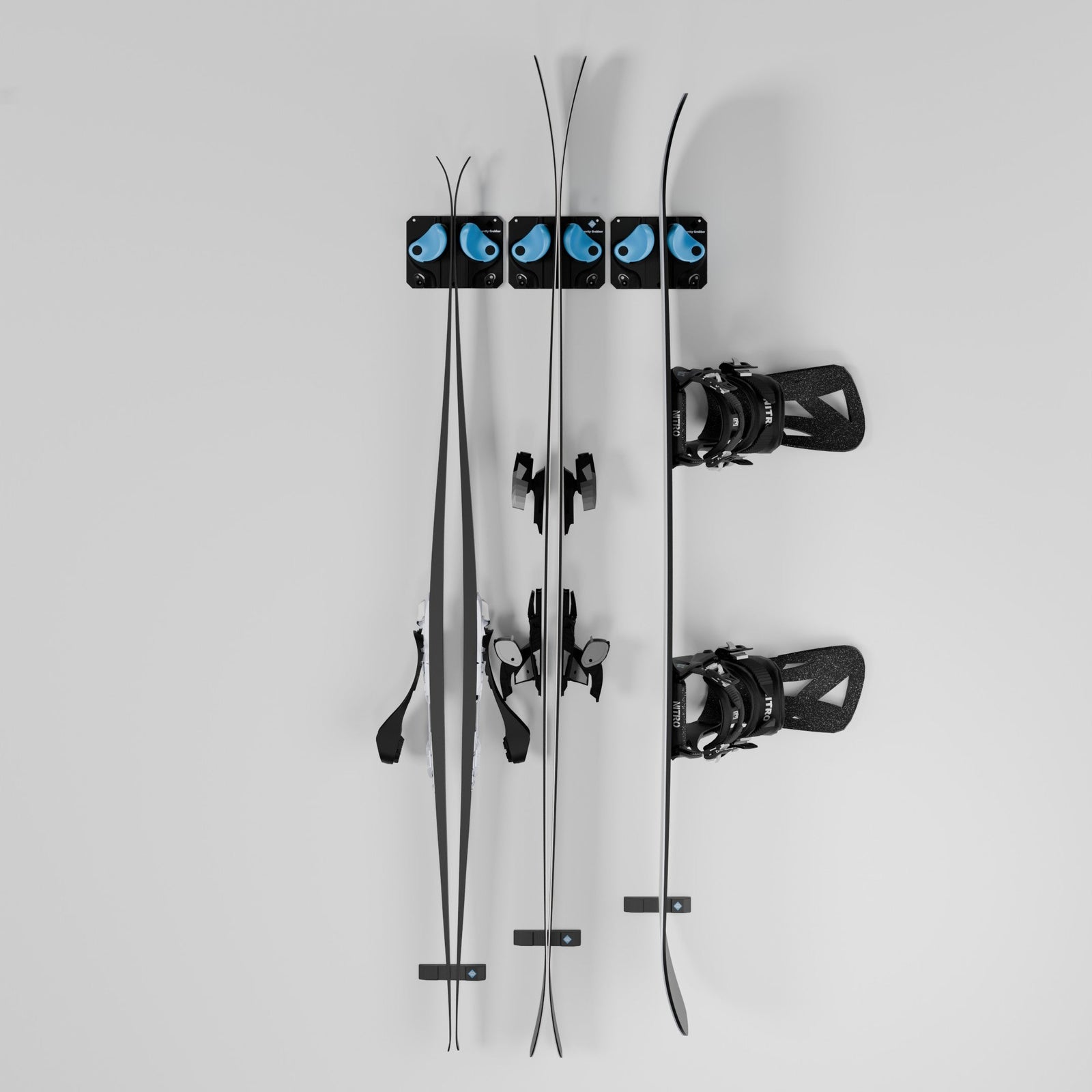After a long day on the mountain—or a long season—storing your snowboard properly makes a real difference. Leaning it against a garage wall or stacking it on the floor might seem fine in the moment, but over time, poor storage can damage edges, warp your board, and shorten its lifespan.
Finding the right way to keep your snowboard on a rack not only protects your gear but keeps your space organized, clean, and ready for the next adventure.
Why Proper Snowboard Storage Matters
Snowboards are tough, but they’re not invincible. Storing your board improperly can lead to:
-
Edge damage from pressure points or impacts
-
Warping from uneven surfaces or leaning at awkward angles
-
Moisture buildup if the board is left on damp floors
-
Delamination over time if water and debris work their way into small cracks
Good storage minimizes these risks. It keeps your board in a neutral position, off the ground, and out of high-traffic areas where accidents are more likely to happen.
What to Look for in a Snowboard Rack
Not all racks are created equal. If you want to store your snowboard on a rack properly, look for a system that:
-
Supports the board evenly without putting pressure on the edges
-
Keeps the board off the ground to avoid moisture damage
-
Holds the board securely so it won’t slip or fall if bumped
-
Makes it easy to grab and go when you’re heading out
-
Saves wall and floor space by using a clean, vertical setup
While traditional shelf-style racks or simple wall hooks can work, they often force the board into awkward angles or pressure points that aren’t ideal for long-term storage.
Gravity Grabber: A Flexible Way to Store Your Snowboard
One storage option that’s gained a lot of traction is Gravity Grabber, a wall-mounted rack originally designed for skis and snowboards but now used for all kinds of gear.
Instead of hooks or shelves, Gravity Grabber uses adjustable arms that gently grip the sides of your snowboard. The system relies on your board’s own weight to hold it securely, without putting extra pressure on the edges or base.
This means your snowboard stays upright, balanced, and protected—whether you’re storing it for the night, the weekend, or the entire off-season.
And because the system adjusts automatically, it works for different board sizes, binding setups, and even lets you store other gear like skis, skateboards, or paddles when the seasons change.
Best Practices for Storing a Snowboard on a Rack
No matter what type of rack you choose, a few simple habits will help keep your board in top shape:
-
Dry it first: Wipe down your board after use to remove snow, water, and debris.
-
Loosen bindings if storing long-term: This helps relieve pressure on the inserts.
-
Store in a cool, dry place: Avoid direct sunlight, extreme heat, or overly damp areas.
-
Check periodically: Especially if stored long-term, check your board every few weeks for signs of moisture, warping, or damage.
Using a good rack is the first step—but taking a few minutes to prep your board before storage can make a big difference in how it rides next season.
Store Smarter, Ride Longer
Putting your snowboard on a rack isn’t just about keeping the garage tidy—it’s about protecting your gear and making sure it’s ready to perform when you are.
Whether you use a traditional snowboard rack, an adjustable system like Gravity Grabber, or a custom-built solution, the key is finding a setup that holds your board securely, protects it from damage, and fits your lifestyle.
Because the better you care for your gear off the mountain, the better it’ll take care of you on it.




